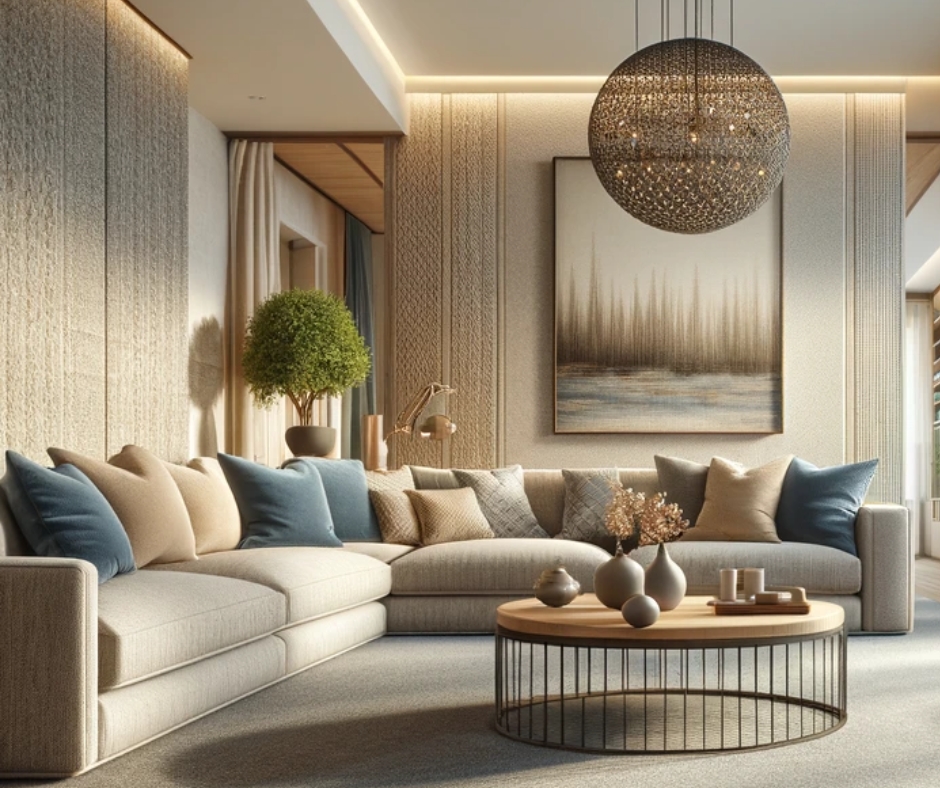
Choosing the Right Carpet for Your Home: Quality Matters
When it comes to selecting the perfect carpet for your home, understanding what constitutes high quality is essential. A good quality carpet doesn’t just elevate the aesthetics of your space but also ensures durability, comfort, and ease of maintenance.
1. Material: The material of a carpet plays a critical role in determining its overall quality, feel, durability, and maintenance requirements. Let’s delve deeper into two primary types of carpet materials: wool and synthetic fibers like nylon and polyester.
Wool: Wool is a natural fiber renowned for its softness, which provides a luxurious feel underfoot. It’s also incredibly durable, making it a long-lasting option for homes. Wool carpets are known for their ability to retain their shape and resist flattening, ensuring a consistently plush look. However, wool can be more expensive than synthetic options and may require professional cleaning to maintain its appearance.
Synthetic Fibers (Nylon and Polyester): Synthetic fibers, particularly nylon and polyester, are popular alternatives to wool. These materials offer excellent stain resistance, which is ideal for homes with kids or pets. Nylon is particularly noted for its durability and resilience, maintaining its shape and appearance over time. Polyester is appreciated for its affordability and is available in a wide range of colors and patterns. Both nylon and polyester carpets are easier to clean and maintain than wool, often suitable for regular vacuuming and occasional deep cleaning.
In summary, while wool offers unparalleled softness and durability, it requires more care and comes at a higher cost. Synthetic options like nylon and polyester provide practical benefits like stain resistance and ease of maintenance, making them popular choices for budget-conscious homeowners seeking durability and style.
2. Density and Weight: Carpet density and weight are two distinct characteristics that impact the quality and performance of the carpet.
Density: This refers to how closely knit the fibers of the carpet are to each other. Higher density means that there are more fibers packed into a square inch of the carpet. This not only contributes to the carpet’s overall durability, making it less prone to wear and tear, but also enhances its comfort. A denser carpet typically feels softer and more luxurious underfoot. It’s also better at retaining its shape and resisting crushing from furniture or foot traffic.
Weight: On the other hand, the weight of a carpet is determined by the amount of fiber present in the carpet and its backing material. A heavier carpet doesn’t necessarily mean it’s of higher quality or denser. It’s possible to have a heavy carpet that is not dense if the fibers are long but sparsely distributed or if the backing material is heavy.
In conclusion, when selecting a carpet, it’s important to consider its density as a primary indicator of quality, rather than just the weight. A denser carpet will typically offer better durability and a more comfortable feel, making it a worthwhile investment for your home.
3. Pile Type: The pile type of a carpet refers to how the fibers are treated and arranged on its surface, greatly influencing its texture, appearance, and performance.
- Berber: Known for its looped construction and rugged appearance, Berber carpets are durable, making them suitable for high-traffic areas. Their tight weave resists staining but can be less comfortable underfoot.
- Saxony: Saxony carpets are characterized by a plush, velvety surface, created by tightly twisted cut fibers standing straight up. They’re ideal for formal settings but can show footprints and vacuum marks.
- Frieze: Frieze carpets feature long, twisted fibers that create a textured, shaggy look. This pile type is highly durable and masks footprints and vacuum trails, making it ideal for busy areas.
Each pile type offers distinct aesthetic and functional benefits, making them suitable for different settings in the home.
4. Color and Style: The choice of color and style in a carpet is subjective but plays a crucial role in defining the ambiance of your home. Neutral colors like beige, gray, and cream offer versatility, easily blending with various interior designs and color schemes. They’re ideal for those seeking a timeless look or for spaces that frequently change decor.
On the other hand, bold patterns and vibrant colors can make a strong statement, adding personality and flair to a room. Such carpets can become the focal point of a space, influencing the choice of other decor elements. The key is to balance personal taste with the overall aesthetic of your home, ensuring that the carpet enhances rather than clashes with your existing decor.

5. Underpadding: Underpadding, often overlooked, is crucial for the longevity and comfort of your carpet. A good quality underpad acts as a cushion, reducing wear and tear on the carpet by absorbing the impact of foot traffic. This prolongation of the carpet’s life makes it a wise investment. Additionally, underpadding enhances comfort underfoot, making the carpet feel softer and more luxurious. It also provides sound insulation, reducing noise levels in your home, especially in multi-story buildings. When choosing underpadding, consider its density and thickness to ensure it complements the type of carpet and the needs of your space.
6. Maintenance and Cleaning: Maintenance and cleaning are key factors in carpet selection. Some materials, like wool, may require professional cleaning, while synthetic fibers like nylon and polyester are easier to clean and more resistant to stains. Carpets in high-traffic areas or homes with pets or children might need more frequent cleaning. Opt for carpets that balance aesthetic appeal with practicality for your lifestyle to ensure they remain in good condition with manageable upkeep.
7. Eco-Friendliness: Eco-friendliness in carpeting is an increasingly important consideration. Environmentally conscious homeowners can opt for carpets made from recycled or sustainable materials. These options include carpets made from recycled plastics, organic materials like wool or cotton, and sustainable resources like bamboo. Eco-friendly carpets not only reduce environmental impact but often come with the added benefits of being durable and easy to maintain. Additionally, they can improve indoor air quality by minimizing the emission of volatile organic compounds (VOCs), making them a healthier choice for homes.
In conclusion, a good quality carpet balances material, density, pile type, and aesthetic appeal, while also considering practical aspects like maintenance and eco-friendliness. Take the time to research and choose a carpet that not only looks great but will also stand the test of time in your home.
Ready to transform your home with the perfect carpet? Speak to the experts at Smart Flooring, LLC
continue reading

